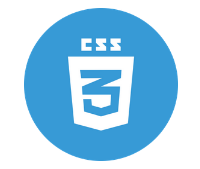
What is CSS3?
CSS3 web development is an essential of modern web development. CSS, or Cascading Style Sheets, is a computer language used for formatting HTML files. These are files containing code that manages the design and appearance of a page. HTML has its own tags and attributes for formatting. However, it makes sense nowadays to use CSS for formatting and keep HTML for content.
How to use CSS?
We can use CSS3 in three ways in order to embellish an HTML document:
- Write the CSS code in a separate special file. It is the most practical, flexible and recommended method. This avoids having to mix everything in the same file.
- Another method is to insert the CSS code directly into a “<style>” tag in the header of the HTML file.
- The last method is not recommended very much. It consists of adding a “style” attribute to the tags. The CSS code will thus be inserted in this attribute. In this case, the code only affects the content of that tag.
Interest of web development in CSS
Creating a website with CSS gives better structure and consistency to the website. Likewise, the maintenance of the site is carried out more easily. In fact, CSS gives the possibility of separating the content and the form of a website. That is to say, the appearance of the site (type, size and color of the font, etc.) is defined on an external sheet to the HTML file. The latter only contains the background (text, images, videos, etc.).
This separation offers a huge time saving when updating your website. In fact, you no longer need to browse all the pages of your website in order to modify the tags and presentation attributes. A single correction on the style sheet and any desired changes will be applied. Another great benefit of using stylesheets is the ability to come up with a multi-design site. The webmaster creates several style sheets with various designs. It gives the visitor the choice of the design they want for them on this site.
CSS is better than HTML in terms of error handling. If a browser encounters a statement, rule, or phrase that it does not understand, it skips it completely without applying it or causing an error. While errors will certainly show up on a live site and negatively affect your visitors’ experience, your entire site is not going to crash because of an error. And if used intelligently, this behavior can be turned into an advantage.
History of CSS web development
The first tests of CSS date back to 1995, a period of the rise of web technologies. However, it was in 1996 that CSS1 saw the light. Two years after the first version, the CSS2 version receives the status of recommendation. CSS3 web development began in 1999, but development was very difficult due to implementation and update issues. CSS is constantly evolving, more than 10 years were needed to finalize the third version.